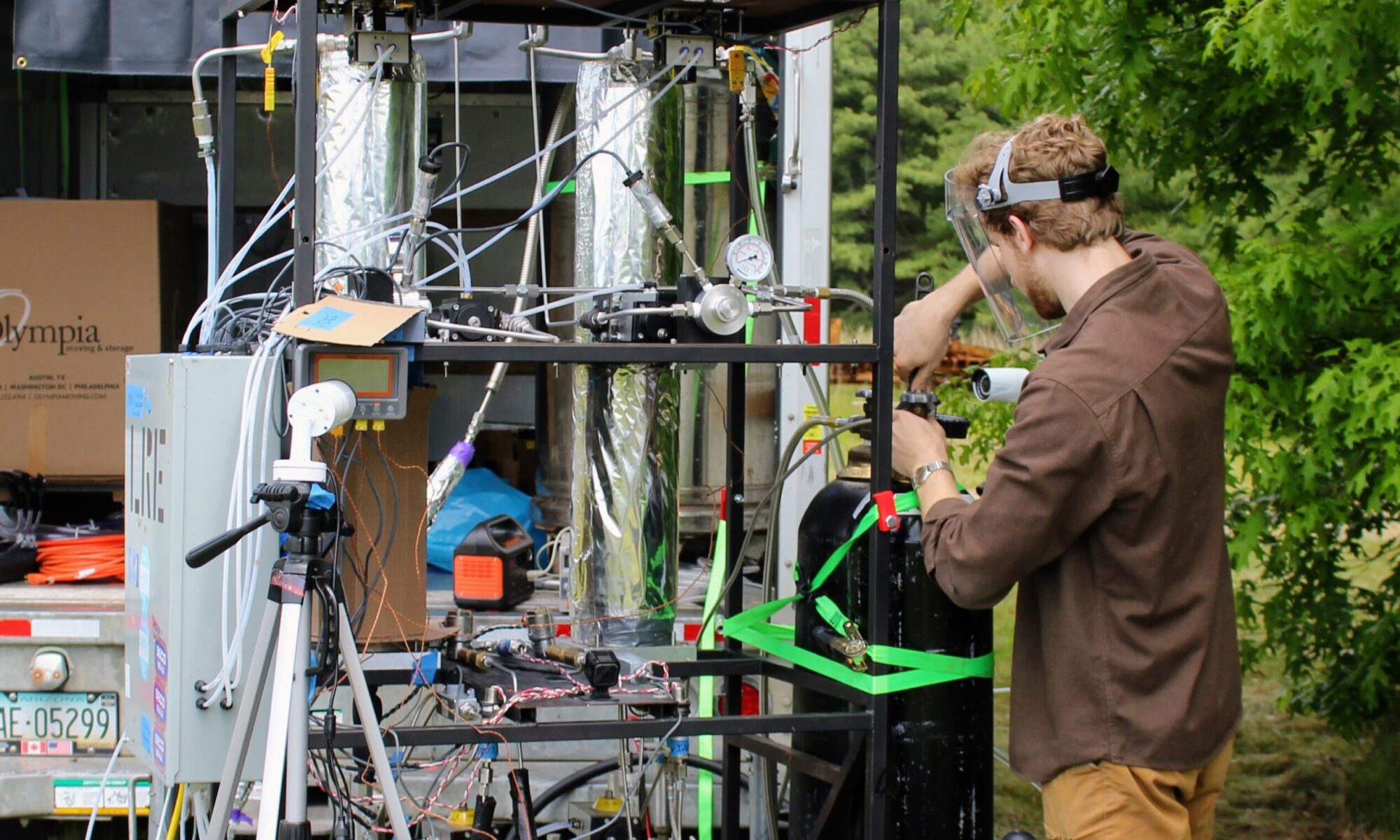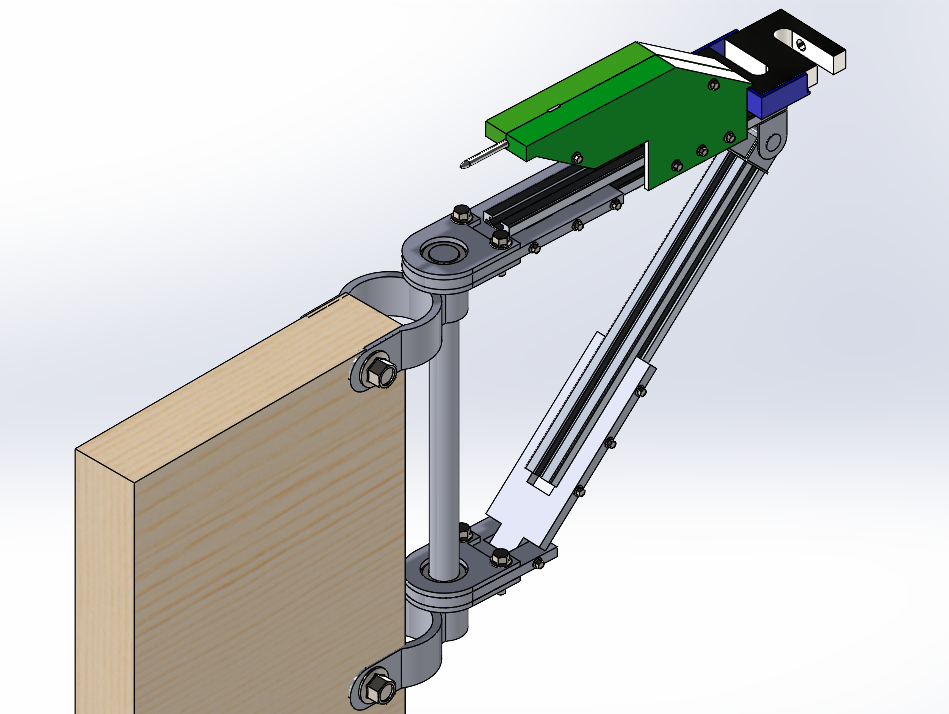In this project, I designed and implemented a robust airspeed sensor to measure drag force on rocket parachutes with Aerospace NU. A previous setup had used a load cell on a wood mast affixed to a car, with the speedometer being used for airspeed. This neglects many conditions; most notably that of crosswind. The goal was then to develop a reliable airspeed sensor for all reasonable conditions.

Through the drag force equation,
(where Fd = drag force, p = air density, v = velocity, Cd = drag coefficient, and A = parachute area) and given a maximum speed of 50mph, the sensor must be able to withstand 100N of axial tension.
A pitot tube was selected as the primary sensor for its accuracy and reliability. This uses a pressure transducer to determine airspeed, and requires that its dynamic port faces the airflow directly. In order to achieve this, a rotating chassis mounted on bearings directed by the parachute was used. This acts similarly to a weathervane, with crosswinds directing its orientation. This ensures that the pitot tube is always facing direct airflow, and recording correct values.
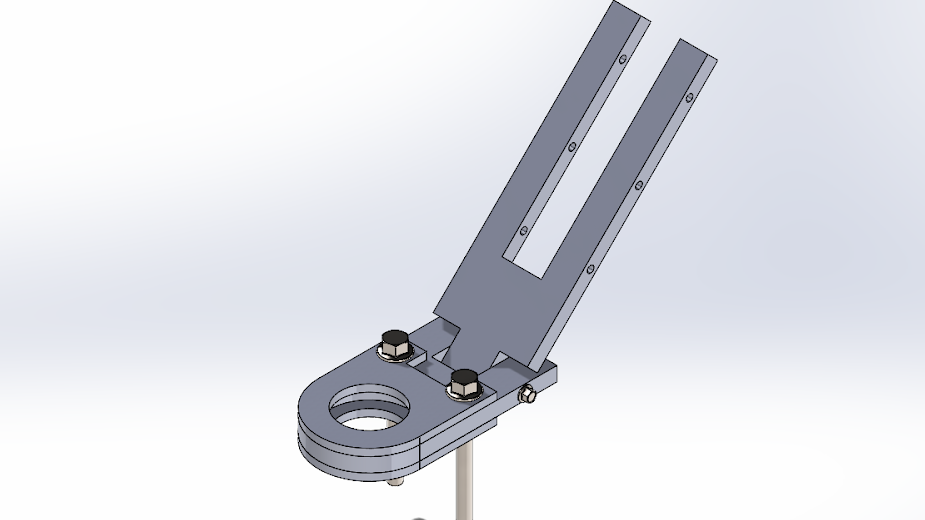
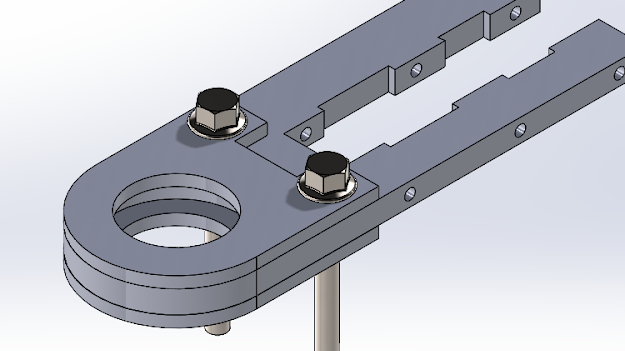
Mounts for the bearings were water-jetted from aluminum and assemble to form compact, stable connections with the mast. A triangular support system was put in place using rails, and FDM plastic components contained the load cell and pitot tube.
Computational fluid dynamic (CFD) simulations were run through Solidworks to ensure the setup geometry would not interfere with the sensor.
The first tests of the sensor are underway, using an arduino setup to record our data. All mechanical aspects of the design worked well, testing far beyond the 100N set point and performing at ~667N (150lbf).
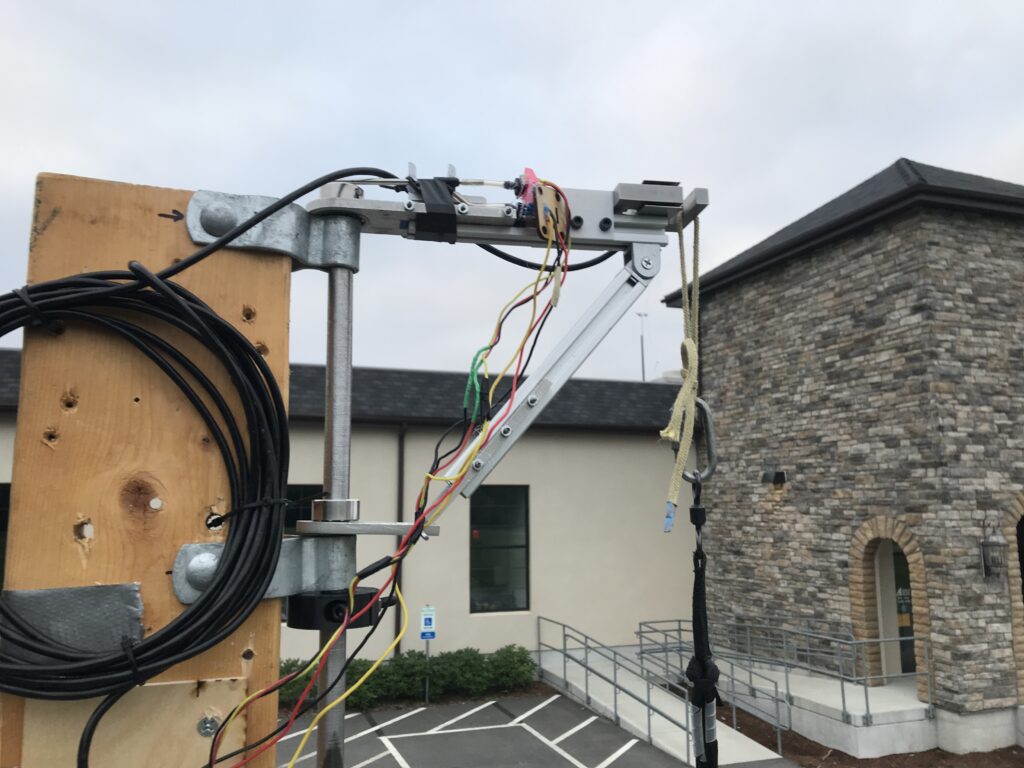
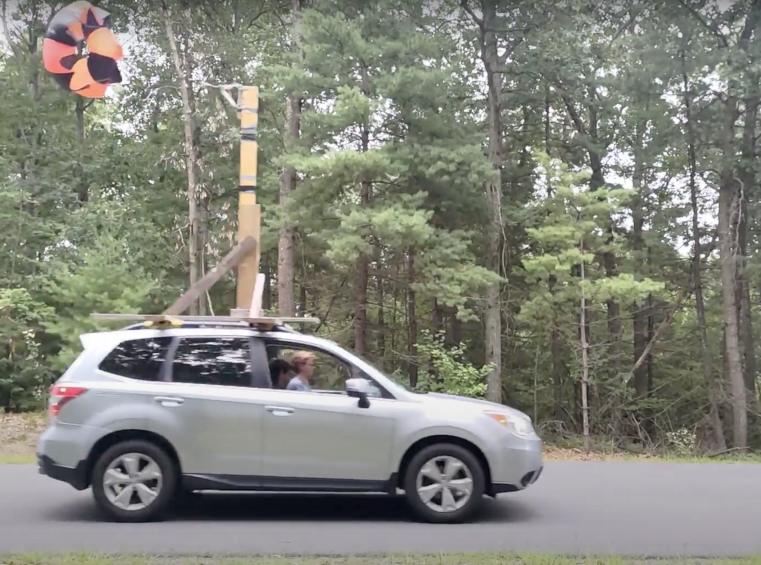
This project was designed and constructed entirely by me, with club members helping with implementation and acquisition. The data observed helps us to determine drag coefficients for the parachutes we design, to more effectively complete a rocket launch.
